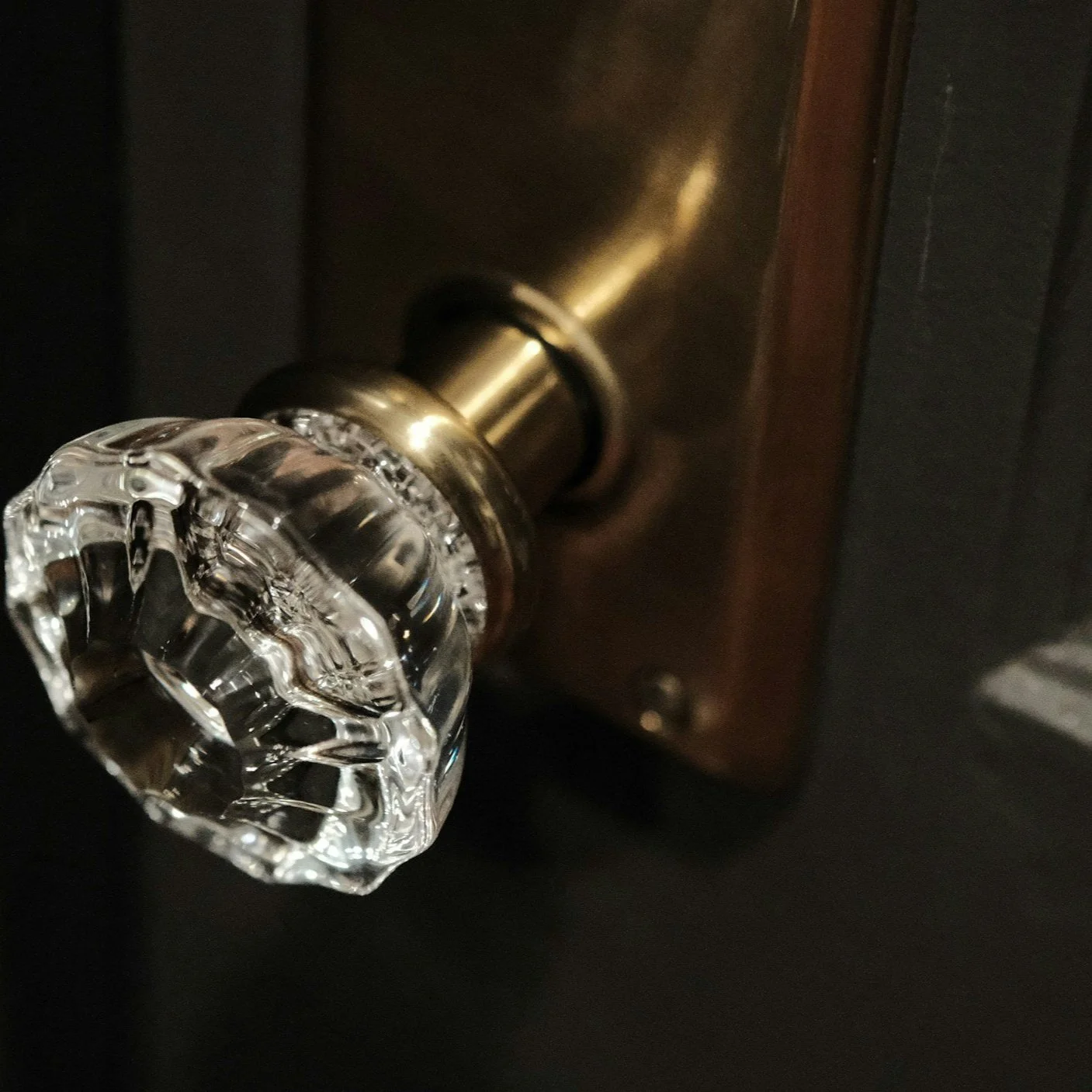Upgrading A Home’s Locks To Match A Modern Or Vintage Aesthetic
Choosing the right lock is about striking that sweet spot between style and security.
Locks don’t just keep things safe—they play a starring role in a home’s visual identity. Whether the vibe leans sleek and modern or tilts more toward antique charm, lock hardware plays a powerful supporting role. Choosing the right lock is about striking that sweet spot between style and security. It’s not just a finishing touch; it’s part of the design language.
Modern Lock Design That Speaks Sleek Fluently
Contemporary homes celebrate clean lines, minimal ornamentation, and neutral tones. Their lock hardware should feel just as refined. Matte black finishes have become the new design darling, but brushed nickel and stainless steel still hold their own. These finishes help locksets disappear into the aesthetic rather than distract from it.
Minimalist homes call for tech-forward solutions that skip the keys entirely. Keyless entry systems and smart locks offer a high level of functionality while contributing to a seamless visual experience. Many homeowners appreciate the added bonus of smartphone control or auto-lock features. A touchpad glows quietly on a modern entry door like it was born there.
Professional locksmiths fit these advanced systems with precision, fine-tuning sensor sensitivity, strike alignment, and access programming. A modern home doesn’t have time for sticky locks or clunky installations. Technology should work the first time, every time—and look good doing it.
Vintage Locks With Character That Lasts
There’s a certain romance to a door with a heavy brass knob or an old-world keyhole. Homes with vintage or historic features deserve locks that match their timeless appeal. Brass, bronze, and antique iron finishes instantly convey a sense of heritage and craftsmanship.
Traditional locksets bring more than looks to the table. Mortise locks, skeleton key setups, and decorative rosettes add texture to an entryway while offering durability that’s hard to beat. Ornate escutcheons and classic thumb latches feel right at home on carved wooden doors or period-appropriate millwork.
Underneath all that style, today’s vintage-inspired locks pack updated internal components. Security standards have evolved, and locksmiths now retrofit classic-style hardware with modern lock cylinders, reinforced strike plates, and improved keyways. The charm stays on the outside, but the inside runs like a well-oiled machine.
Merging Eras With Transitional Hardware
Some homes don’t commit to just one look. They blend clean surfaces with traditional touches, creating a space where old and new meet in harmony. Transitional design benefits from lock hardware that speaks both languages.
Mixed finishes add depth without clashing—think aged bronze paired with satin nickel or matte black mixed with antique brass. These combinations allow homeowners to walk the line between sleek modernism and historic richness without veering into either extreme.
Locksmiths can suggest smart locks that come wrapped in old-world silhouettes. These hybrids make it possible to enjoy high-tech features like remote access or biometric unlocking while maintaining a style consistent with traditional architecture. Function and form aren’t enemies—they’re collaborative partners in transitional homes.
Function Matters As Much As Style
A lock can look stunning and still perform like a wet noodle. That’s why choosing the right type of lock matters. Exterior doors need strong, secure mechanisms—deadbolts being the standard bearer here. They come in a wide range of finishes and designs, making it easy to find one that suits a modern or vintage palette.
Keyless entry systems take security one step further by eliminating vulnerabilities associated with lost keys or worn tumblers. Interior doors, while requiring less robust hardware, still benefit from good design. Lever handles with integrated privacy locks or knob sets with subtle flair offer style without sacrificing utility.
Decorative plates and backplates can elevate a basic setup. These finishing touches add personality, especially in homes that lean into vintage detail. For more modern spaces, streamlined handles and concealed keyholes allow doors to make a statement without being loud.
Door Styles That Guide Lock Choices
The door itself does more than swing open and closed. It guides the type of lock that makes sense both visually and functionally. Heavy solid wood doors can carry bold antique locks with confidence. Delicate glass panel doors might need a more understated approach—perhaps something low-profile but highly secure.
Barn doors, with their sliding tracks, require surface-mounted locking hardware. Pocket doors call for recessed latches. French doors often benefit from multipoint locking systems that secure the frame at multiple spots for added stability. Each of these doors presents unique challenges and opportunities, and professional locksmiths assess them with a keen eye for both mechanics and design.
Hardware must respect the door’s integrity. No one wants to see a beautifully painted door drilled in the wrong place or an oversized latch dominating a delicate frame. That’s where expertise plays a critical role.
Custom Hardware That Fits Just Right
Sometimes, the standard options just don’t feel special enough. Custom lock hardware allows homeowners to match an exact style, finish, or mechanical feature. Perhaps there’s a need to recreate a historic latch or design a smart lock with a vintage casing. Skilled locksmiths work closely with designers and manufacturers to source or fabricate those specialty items.
Customization might also involve finish matching—coordinating a door handle’s tone with nearby cabinet pulls, exterior lighting fixtures, or even a mailbox. It’s the kind of detail that brings cohesion to a home’s exterior or entryway. It’s not about being fancy—it’s about being thoughtful.
Why Professional Installation Really Matters
A high-end lock can fall flat with a poor installation. Misaligned hardware leads to stiff turning, clicking noises, or even damage to the door. Worse, it leaves the lock vulnerable to break-ins or premature wear. Professional locksmiths prevent those headaches by installing locks with millimeter precision.
They handle everything from mortising clean pockets in wood to programming smart lock settings to match user preferences. Homeowners appreciate how fast and quietly the whole upgrade can happen. There’s something refreshing about watching someone show up with the right tools and make everything click into place.
Security Features That Don’t Compromise Design
Today’s locks work harder behind the scenes than most people realize. High-security locks come with features like bump resistance, pick-proof cylinders, reinforced strike plates, and even drill-resistant housings. These upgrades don’t shout—they’re baked into the design.
Smart locks now offer multiple layers of access control, from fingerprint scans to auto-lock timers to guest passcodes. These features contribute to a sense of ease without disrupting the aesthetic flow of the home. And when installed professionally, they don’t leave wires exposed or hardware out of alignment.
A beautiful lock should also be a dependable one. There’s no need to choose between elegance and peace of mind.
Maintenance That Keeps Locks Looking And Working Like New
Even the best locks need some attention from time to time. Brass can tarnish, moving parts might dry out, and smart components occasionally require software updates or battery checks. Regular maintenance keeps things moving smoothly and looking sharp.
Professional locksmiths offer upkeep services that range from polishing finishes to reprogramming keypads to tightening internal springs. Some locks may require seasonal adjustment—especially in regions where temperatures swing dramatically, causing doors to shift. A trained eye catches those minor shifts before they cause bigger problems.
Routine lock maintenance isn’t glamorous, but it’s one of those behind-the-scenes things that makes a big difference.
Matching Locks To Lifestyle
Every household runs a little differently. A family with school-aged kids might want keyless locks that work with codes and allow quick access during the after-school scramble. A couple who travels often might prefer smart locks that can be monitored and adjusted remotely. A homeowner with historic preservation goals may want to keep a lock that matches a 1920s blueprint.
Locksmiths customize hardware to those specific needs. It’s not just about putting something in the door—it’s about making sure it supports the people walking through it every day.
Aesthetic Consistency That Feels Intentional
When the locks match the hinges, which match the light fixtures, which echo the front gate handle—something satisfying happens. Everything feels unified, even if the styles span different eras. That consistency is no accident. It’s the result of planning, good communication, and professional insight.
Lock upgrades are often part of broader design updates—new paint, updated siding, or refreshed landscaping. Working with a locksmith during that process helps keep the look harmonious from porch to pantry.
One Small Detail With Major Impact
Lock hardware might seem like a footnote in the design world, but its influence is undeniable. A lock is one of the first things someone touches when arriving at a home. It sets the tone for the experience inside. A vintage mortise lock can whisper elegance. A satin black keypad can announce modern confidence. The right choice does more than open a door—it opens a feeling.
Kwik Pick Lock and Safe now offers U-Haul services along with FREE lockout service for children or pets. If you need reliable locksmith services for your Surprise, El Mirage, or Phoenix home or auto, call today!

